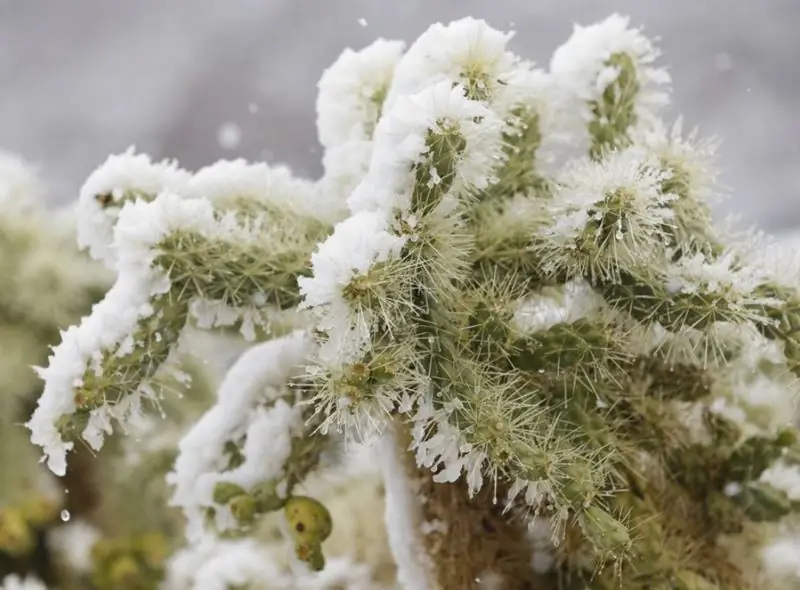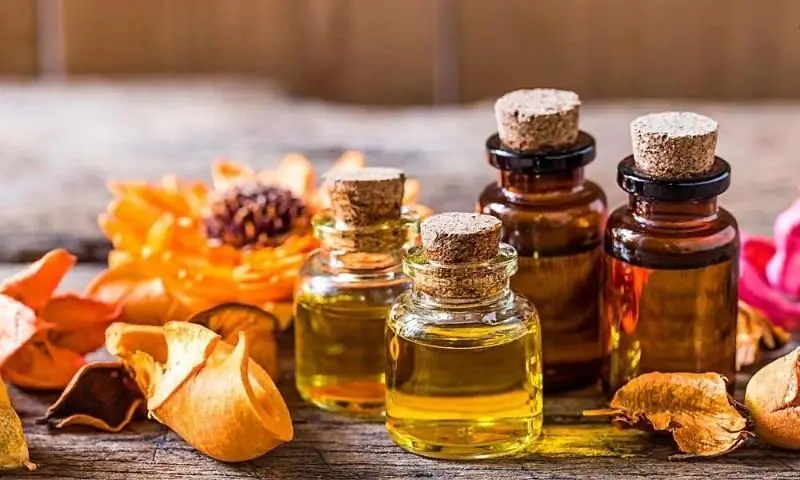
Table of contents:
- Spathiphyllum transplant at home - step by step instructions
- When should spathiphyllum be transplanted?
- Preparing the ground for "Women's Happiness"
- Transplant - step by step instructions
- Primary care after
- The plant withers, the leaves turn yellow - what can be done?
- Video: how to properly transplant spathiphyllum
- Author Bailey Albertson [email protected].
- Public 2023-12-17 12:53.
- Last modified 2025-06-01 07:32.
Spathiphyllum transplant at home - step by step instructions

Spathiphyllum is a very beautiful flowering plant that quickly gained popularity among amateur flower growers. It is called "White Sail", "Women's Happiness" and many legends and beliefs are associated with it. Spathiphyllum not only looks luxurious, it is loved for its simplicity. But, nevertheless, you need to know some rules for caring for him, and especially transplants.
Content
- 1 When is it necessary to transplant spathiphyllum?
- 2 Preparing the ground for "Women's happiness"
-
3 Transplant - step by step instructions
3.1 Planting the dividers
- 4 Initial care after
- 5 The plant withers, the leaves turn yellow - what can be done?
- 6 Video: how to properly transplant spathiphyllum
When should spathiphyllum be transplanted?
If you properly care for the spathiphyllum (water it in a timely manner, provide the necessary temperature and light conditions), then its growth will be rapid. In this case, the bush occupies the entire pot, and the root system develops in a thick lump, braiding all the soil inside the container. Spathiphyllum loves tight spaces, but every 3-5 years it needs to be transplanted into a larger pot. There may be 2 reasons for this:
- the plant does not bloom for a long time;
- old roots stick out from the soil in the pot, and the rosettes sway.
Move the curtain apart and take a closer look at the lower leaves. If they dry out, then the plant also needs a transplant. But if the leaves wither and turn yellow only at the tips, the plant lacks moisture. It's not about watering, but about too dry air. Perhaps the spathiphyllum is too close to the heating radiator. Move it to a different location or install a humidifier in the room.

Too protruding roots - a sign of the need for transplant
Experts recommend replanting spathiphyllum in the spring, not in the fall (for example, in November). But for tropical plants living in indoor conditions, this is not important. The main thing is that the temperature in the room where you will transplant the flower is at least 20 degrees.
If you bought spathiphyllum from a store, wait 3 weeks for the first transplant. The flower needs to get used to the new room and regime, acclimatize, transplanting can be too much stress right after the purchase. And the root system needs to grow a little.
Prepare for the transfer in advance. You will need:
- the pot is one size larger than the previous one;
- film to cover the work surface;
- secateurs;
- scoop;
- rubber gloves;
- priming.
Wash the transplant pot thoroughly and pour over boiling water. We will talk separately about the soil for spathiphyllum.
Preparing the ground for "Women's Happiness"
This plant thrives on loose soils with a slightly acidic reaction. In specialized stores, you can buy a universal soil mixture for aroid plants (which includes spathiphyllum) or for flowering tropical plants. It needs to be mixed with a little sand.
You can prepare the soil yourself at home, if possible. So, what material and in what proportions you need to mix:
- 1 piece of leafy land;
- 2 parts of sod land;
- 1 part peat;
- 0.5 parts of charcoal;
- 0.5 parts of brick chips;
-
1 part coarse sand.

Soil for a flower You can independently prepare the soil for transplanting a flower
Charcoal can be replaced with chopped bark or coconut fiber. Add some superphosphate to enrich the soil. It is important to note that the amount of additives was no more than 10% of the total mass of the substrate. This way you will achieve good aeration (air ventilation) and moisture holding capacity of the soil.
Transplant - step by step instructions
Shake the pot lightly and carefully remove the spathiphyllum from it along with the lump of soil. Help with a garden scoop. The soil can be moistened with plenty of water, so it will be easier to remove.

Remove the clod plant from the pot
The roots of an adult plant should tightly braid a lump of soil and occupy the entire pot. At this stage of development, the plant blooms profusely. Do not choose a pot that is too large and tall for transplanting, which is much larger than the previous one. Spathiphyllum bloom will not come until the root system again occupies the entire space of the pot. It is better to choose a low container with a diameter of 15-20 cm.

The root system of the plant should densely occupy the entire pot
Remove soil and old drainage from the roots. To make it more convenient, work on an oilcloth split in the corners: you get something like a small trough.

Remove soil and drainage from roots
Use pruning shears or scissors to trim the stalks, if any. After transplanting, the plant should not expend energy to maintain flowering.

Cut off the remaining flower stalks
Also cut out leaves that are too young and wilted.

Remove old dry leaves
Tear off the bases of old leaves carefully. Rotting can begin from them.

Tear off the bases of old leaves
Together with the transplantation of an adult spathiphyllum, it can be reproduced. To do this, divide the curtain of the plant into parts. Each division must have a healthy and strong rhizome.

If necessary, you can multiply the flower
If you haven't transplanted a plant for a long time, then you can get many outlets.

Spathiphyllum sockets
Shorten too long roots, cut out rotten ones.

Shorten roots that are too long
Sometimes it becomes cramped for a young plant in a pot. Just transfer it without dividing it into another pot, slightly larger in size.
You can divide the young plant into parts. Plant several divisions in each pot - this way the roots will quickly braid a lump of soil.
Planting a divider
Place drainage in a layer up to 2 cm on the bottom of the pot. It can be fine-grained expanded clay, pebbles, crushed brick.

Pour drainage into the pot
The second layer is the prepared substrate. Pour it not to the very top of the container.

Stock the substrate below the top level of the pot
Place the spathiphyllum cut in the center of the pot on the ground, distribute the rhizomes.

Plant the cut in the ground
Like many aroids, spathiphyllum can form aerial roots. You can easily see them: these roots look like growths and bumps on the trunk. Do not be alarmed, this is not a sign of illness.

There may be aerial roots on the surface of the plant trunk
Do not bury aerial roots when transplanting. Over time, they themselves will reach the soil and take root, additionally securing the flower.
Fill the pot with prepared soil to the top, tamp it lightly.
Slightly deepen the leg, crush the substrate around it. The socket must be firmly attached and not wobble.

Add soil and apply so that the flower is tightly held in the pot
Water the spathiphyllum liberally after transplanting to help the soil settle. Add more substrate if necessary.

Water spathiphyllum liberally
Spray the leaves thoroughly with a spray bottle.

Spray the leaves with a spray bottle
Primary care after
After transplantation, spathiphyllum needs high humidity in the first month. If you want the plant to acclimatize faster and enter the flowering stage, build a kind of greenhouse for it. To do this, it is enough to completely wrap the pot with spathiphyllum in a plastic bag. As long as the plant is “under the hood,” it needs simple care: regular watering and ventilation.

Cover the flower with a polyethylene hood for the first few weeks to keep it hydrated.
The plant withers, the leaves turn yellow - what can be done?
Many growers complain that after transplanting their tropical pet begins to wither, drop leaves, and turn yellow. This is most often due to a lack of moisture. Spray the plant often (up to several times a day).
Watering the flower must be done carefully: an excessive amount of moisture in the soil can harm the root system, which will again lead to wilting of the leaves. Water spathiphyllum liberally, but only as the soil surface dries.
Excessive sunlight can cause wilting. Spathiphyllum loves diffused light, and even more - shade. If you decide to keep the plant on a windowsill, give preference to windows overlooking the north, west and east side.
Video: how to properly transplant spathiphyllum
As you can see, transplanting spathiphyllum is not so difficult, and the main thing in the process is attention and accuracy. We hope our tips will help you keep "Women's Happiness" in bloom for as long as possible. Please ask any questions you have about the topic in the comments. Good luck and comfort to your home!
Recommended:
How To Transplant An Orchid At Home Correctly + Video And Photo

Orchid transplant rules. Necessary materials, planting methods, step-by-step instructions for planting a plant in a new pot
How To Care For Cacti In Winter: How To Water, Feed, Is It Possible To Transplant

What conditions are needed for different cacti in winter. How to properly care for them: to water or not, what kind of lighting, feeding and other procedures are needed
Cat Colors That Bring Happiness And Good Luck

What color should you choose a cat for good luck
Fragrances That Bring Happiness To Your Home

What essential oils will help create an atmosphere of love, luck and well-being in your home?
3 Shades Of Geranium, Which, According To Popular Belief, Guarantee Family Happiness

Family happiness according to folk signs: 3 shades of geranium, which contribute to the creation of a family and the birth of children
